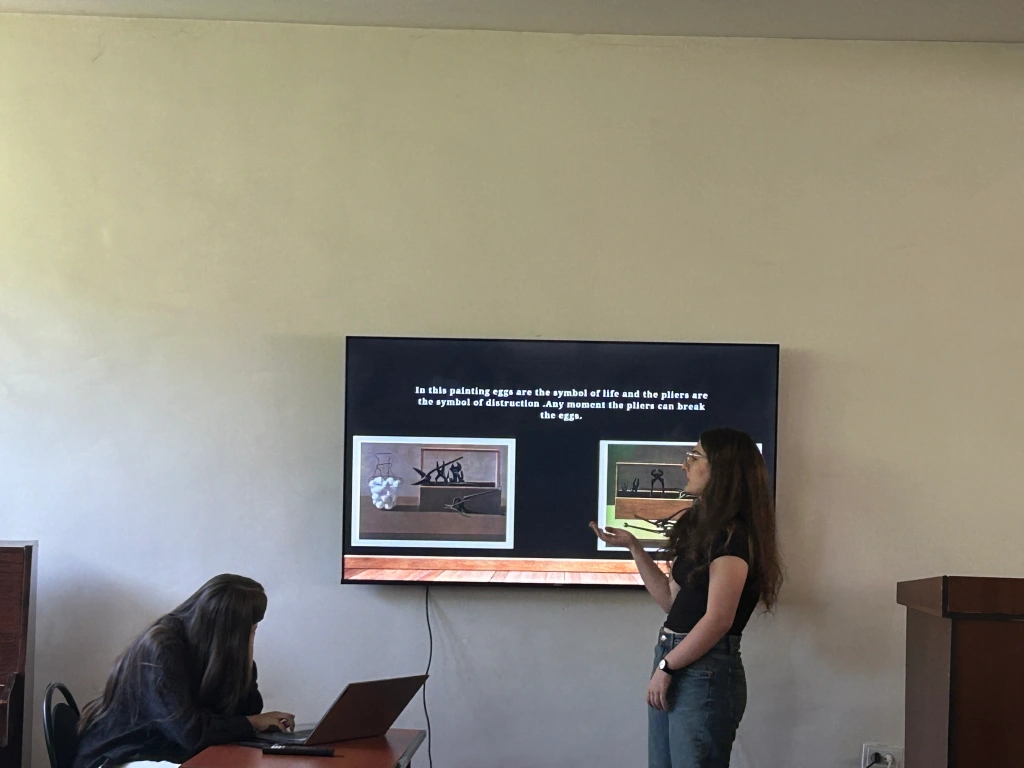The open English classes planned for the May Gathering 19 created a new quality at our high school. It turned out that in all three open classes, the students, under the guidance of their teachers, demonstrated that they had carried out research work as a whole class.
The first research work was presented on May 16 by the English elective groups of Grades 10 and 11 under the leadership of Silva Harutyunyan. They spoke about psychological effects that different types of music have on people. The most interesting thing was that at first they talked about the psychological effects of music, and then they substantiated what was said practically by playing a musical instrument.
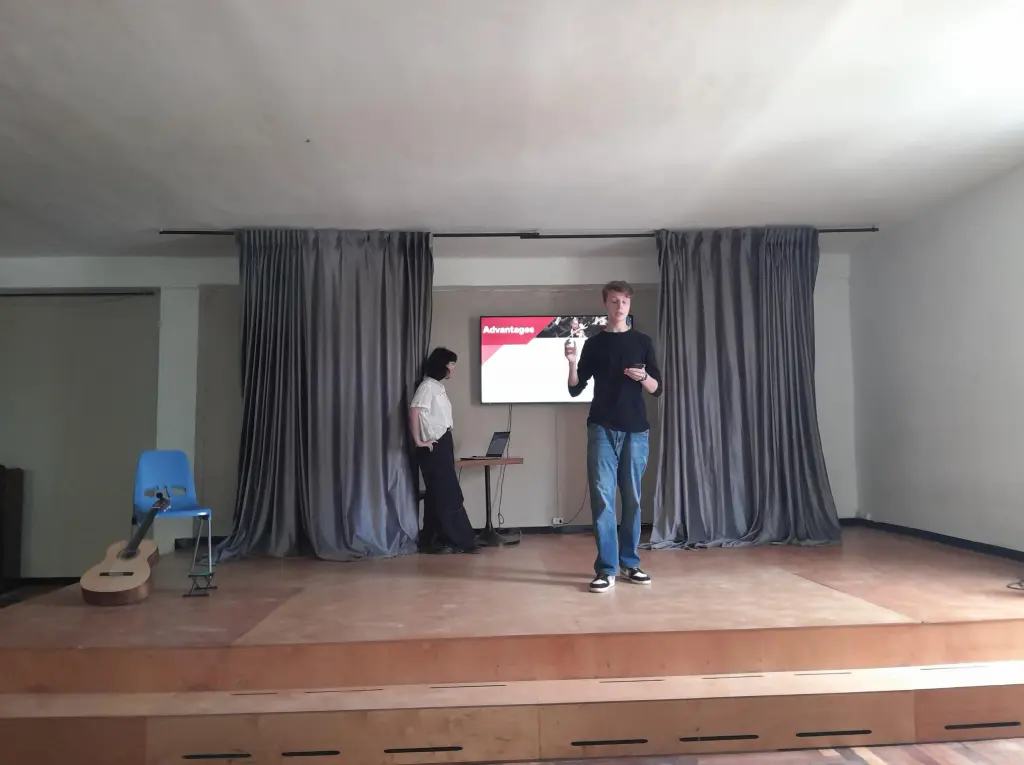
Nane Martirosyan and Levon Tsaturyan talked about how classical music calms the human nervous system, relieves tension and inspires hope for the future. Nane delivered the first pleasant and practical surprise. She sat down at the piano and played Chopin’s Prelude. The impression was stunning. First, you hear how 10-11 graders of an Armenian school talk about classical music in English with a fairly high level of knowledge of the language, and then they play Chopin on the piano to make what they say more solid.
Hasmik Varderesyan spoke about Armenian national musical instruments and music. She said that Armenia is a small country, but the landscape of our country is diverse: mountains, foothills, plains. So is music. It is brave and fighting in one case, and in another case it is mild and expresses tenderness. Hasmik spoke with particular enthusiasm about duduk.
The students and teachers in the audience on that day, sitting in the small hall, got great satisfaction when Emil Harutyunyan started his performance with his electric guitar. He showed without words the influence of the Progressive Alternative Metal music style. I didn’t really understand that new style of music, but it was obvious that the people of the 21st century, the learners, liked it very much.
Aram Minasyan got on the stage and started talking about Flamenco guitar musical style. There was so much seriousness, love and dedication in Aram’s words and guitar sounds. The psychological effect of flamenco is just that: self-expression and devotion of the seriousness of romantic love.
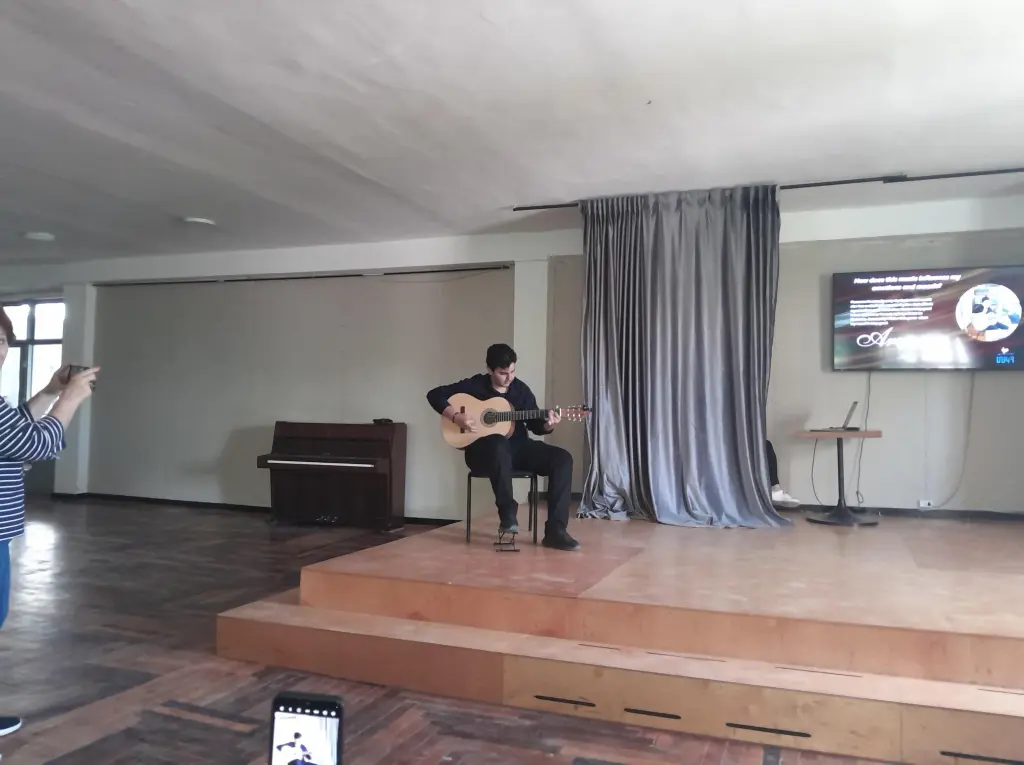
The second surprise on May 16 was delivered by the elective group of 10th graders led by their teacher Irina Apoyan. They presented the results of the “Increasing Social Awareness” research project. Why was there a demand for such a research project? Television is a powerful way to raise social awareness of an issue, but it has long been a tool for those who can afford to pay for their advertising. This project group of 10th graders found the way out.
In those videos, they speak out about the issues that concern them and direct the public’s attention to them.
Ari Agop, Yana Khachatryan and Mkrtich Papikyan researched the problem of volunteering in Armenia and created a film that was shown after their speech, “Volunteering. Personal growth or waste of time”
Another group of students, Maria Abrahamyan, Mary Markosyan, Lala Hovhannisyan and Seda Yengibaryan studied the pictures and writings on the walls around us and tried to find out whether they are examples of graffiti art or vandalism. On the basis of their studies, they created a film with a social tone, “Graffiti or Vandalism”. Art or Crime?”
Grisha Yenokyan considers informing about cybercrimes to be an important social awareness and has created a film on this issue.
Discovering the hidden messages of creations
In works of fine art, music, literature, and cinematography, creators often do not overtly show or express everything. For a true creator, it is uninteresting to write openly about everything, or to present everything openly. Important messages are often hidden in high-quality works so that the reader of a literary work, the listener of a piece of music, or the viewer of a work of fine art discovers everything that the author wanted to say. My project group of 10th graders was tasked with uncovering these hidden messages in works of fine art, music and literature, as well as movies. Student Alisa Hakobyan gave the idea to carry out such a project and added that she would research the principles of revealing the hidden messages of literary works, illustrating with concrete examples. The students themselves made the division of work based on their interests and preferences. The presentation of the results of the project “Uncovering Hidden Messages of Creations” was held on May 20 at the educational open class.
Alisa Hakobyan presented the principles and methods of uncovering hidden messages of literary works in examples.
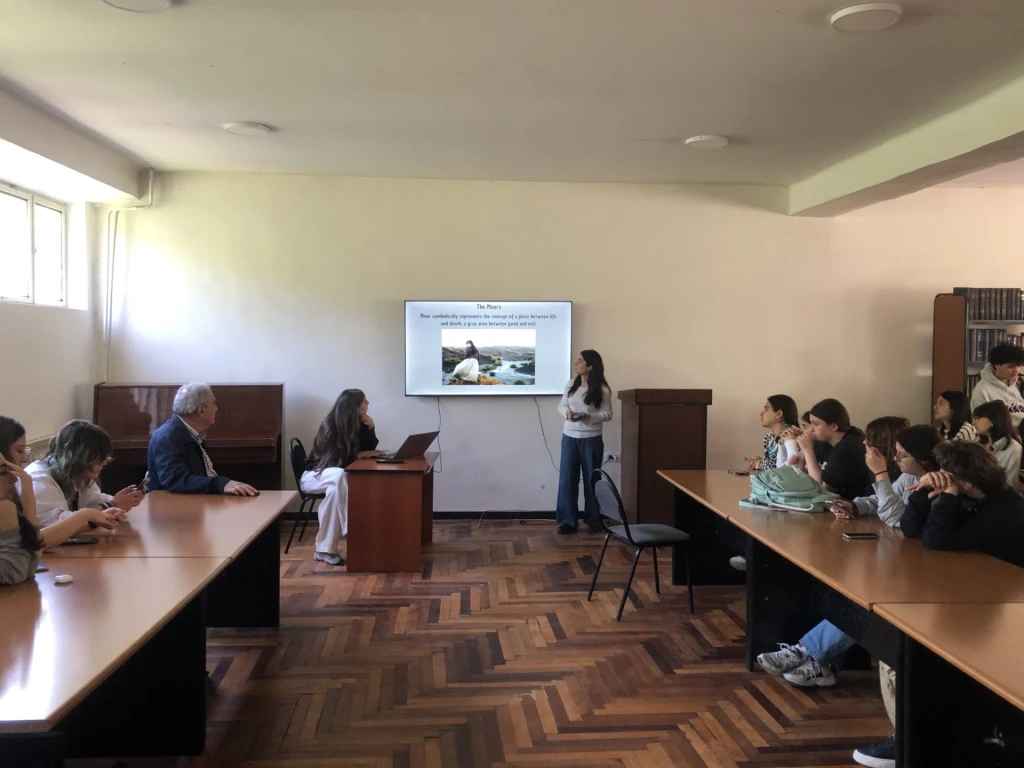
Alisa used three book examples to show her findings: Jerome David Salinger’s “The Catcher in the Rye”, William Golding’s “Lord of the Flies”, and Emily Brontë’s “Wuthering Heights”. According to Alisa’s study, uncovering the hidden messages of literary works is accomplished through the following stages: close reading, the importance of reading and absorbing the entire context, character analysis, discussion, and exchanging ideas. Alice had carefully analyzed and identified important hidden messages in Emily Brontë’s novel in the following words: “ghosts”, “steppe”, “weather, wind and trees”, “dogs”, “color and shape of hair”.
Luiza Tovmasyan chose music, more precisely, one of the most common methods of conveying hidden messages in songs – subtle metaphors and allegories of words. Songwriters often use poetic language and symbolism to convey deeper meanings, allowing listeners to interpret the message in their own way.

In her research, Luiza analyzed songs by Kanye West, Ping Floyd and Kendrick Lamar.
Maria Tamrazyan studied a group of fables and revealed their hidden messages. She admitted that her topic was a little childish and that’s why she structured her speech in an accessible manner. I think that with this research work, Maria can successfully implement the “Learner-Teacher” project in the elementary schools.
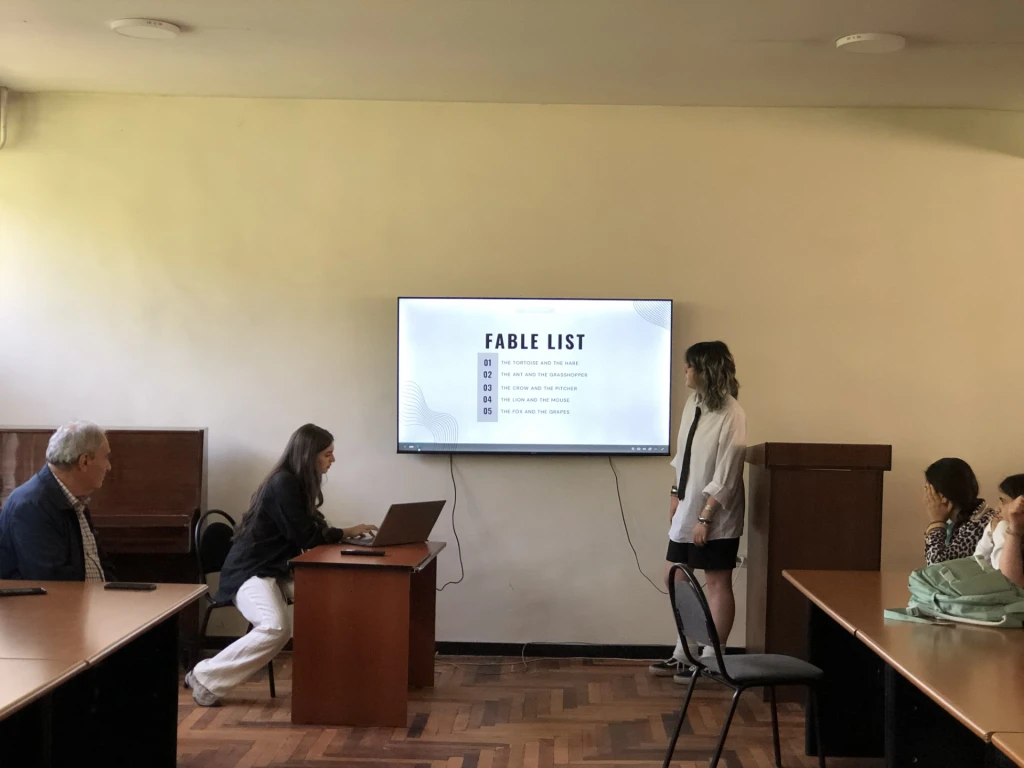
Of particular interest was Mary Karapetyan’s topic: “Hidden messages in the films of Artavazd Peleshyan and Henrik Malyan“. “Seasons of the Year” was selected from Artavazd Peleshyan’s films. There is no human voice in Peleshyan’s film. We see only the filmed images and listen to Vivaldi’s music of the same name, and during the open class we also heard Mary’s voice with her findings. Mary’s description of the scene of thousands of apples falling and rolling into the water in Henrik Malyan’s film “Nahapet” accompanied by the song Dle yaman was also appropriate and impressive. Mary quite rightly revealed the hidden message of the film “A Piece of Sky” as well: “You should fight for your own happiness to the end, even against the stereotypes accepted in the community.”
At the end of the open class, Yekaterina Ayvazyan spoke about the messages hidden in fine art. Ekaterina made several discoveries of the hidden messages of Hakob Hakobyan, Leonardo Da Vinci and Kazimir Malevich. The revelations of the hidden messages of Hakob Hakobyan’s paintings were unexpected news for the students present at the open class. She had worked to answer these questions in her research: why does Hakob Hakobyan depict trees only in deep autumn, when they are leafless? Why does he paint the bus stop with only mannequins? Why does he draw flowers withered and with broken stems? Ekaterina also talked about Leonardo Da Vinci’s Armenian letters that can be seen in mirror reflection, as well as Kazimir Malevich’s famous “Black Square” painting.
